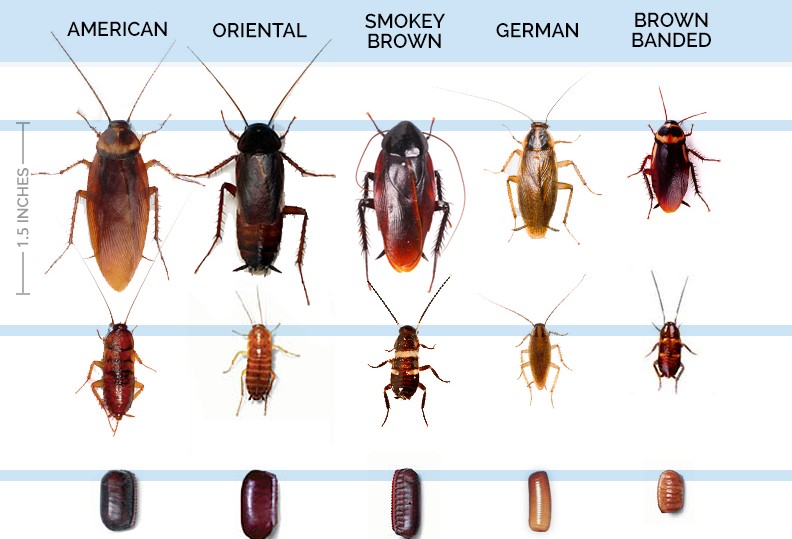Roaches
 Cockroaches thrive in warm environments that provide food, water, and shelter. Roaches hide in cracks, crawl spaces, and other dark places during the day and come out at night to feed. Pesticide sprays alone will not control roaches and are not usually required. Baits provide better control. You must integrate several strategies to make your home a less roach-friendly environment. Thoroughness is essential for effective control.
Cockroaches thrive in warm environments that provide food, water, and shelter. Roaches hide in cracks, crawl spaces, and other dark places during the day and come out at night to feed. Pesticide sprays alone will not control roaches and are not usually required. Baits provide better control. You must integrate several strategies to make your home a less roach-friendly environment. Thoroughness is essential for effective control.
There are six species of cockroaches in California that can become pests: German cockroach, brown banded cockroach, oriental cockroach, smoky brown cockroach, American cockroach, and Turkestan cockroach. A seventh species, the field cockroach, is not really a pest. It is usually found outdoors, but sometimes comes indoors when it is hot or dry and is often mistaken for the German cockroach. Of these seven species, the one that has the greatest potential for becoming persistent and troublesome is the German cockroach, which prefers indoor locations. Oriental and American cockroaches occasionally pose problems in moist, humid areas.
Problems Associated with Cockroaches
Cockroaches contaminate food and eating utensils, destroy fabric and paper products, and impart stains and unpleasant odors to surfaces they contact.
People are repulsed when they find cockroaches in their homes and kitchens. Cockroaches (especially the American cockroach, which comes into contact with human excrement in sewers or with pet droppings) may transmit bacteria that cause food poisoning. German cockroaches are believed to be capable of transmitting disease-causing organisms such as Staphylococcus spp., Streptococcus spp., hepatitis virus, and coliform bacteria. They also have been implicated in the spread of typhoid and dysentery. Indoor infestations of cockroaches are an important source of allergens and risk for asthma among some populations. The levels of cockroaches and allergens are directly related to cockroach density, housing disrepair, and sanitary conditions.

